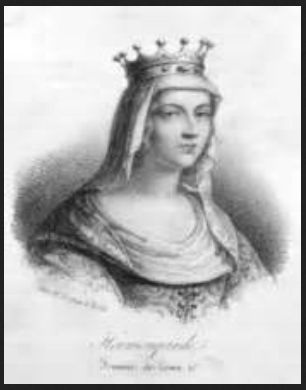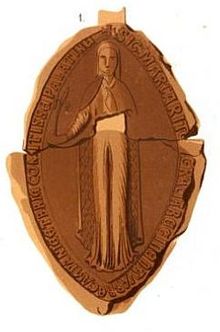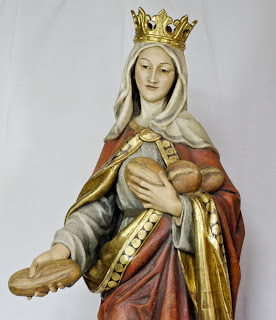
Berengaria of Navarre was born around 1165 her parents were Sancho VI of Navarre and Sancha of Castile. She was gifted the fief of Monreal in 1185 by her father. Her lands and unblemished reputation caught the eye of Eleanor of Acquitane as a possible wife for her son Richard. There was a slight glitch in that plan though, Richard was already betrothed to Alys, the sister of King Philip II of France. Richard broke that alliance in 1190 citing rumors that she had had an affair with Henry II of England, Richard’s father, and may have had an illegitimate child. An affair with dad would definitely be a good reason to call off a wedding. That same year Eleanor had met Sancho in Pamplona where he hosted her at a royal banquet in the Royal Palace of Olite. This was most likely where the marriage agreement was privately worked out. Once the formalities were arranged Richard had his mother deliver his new bride to him at Messina in Sicily. Berengaria and Eleanor arrived during Lent in 1191 so the wedding had to be put off until after Easter. While there the women met up with Eleanor’s daughter Joan, the widowed Queen of Sicily. Eleanor left Berengaria in Joan’s care and the two younger women went off to the Holy Land to catch up with Richard who was busy crusading. During this trip their ship rang aground in Cyprus and Isaac Komnenos, the island’s ruler, threatened them. Richard came to their rescue and overthrew Kommenos. The pair married there on May 12, 1191 at Chapel of St George at Limassol. She was crowned Queen that day by the Archbishop of Bordeaux and Bishops of Évreux and Bayonne. It is unknown whether or not this marriage was ever consecrated.
Berengaria, like her mother in law before her, followed her husband off on the Crusade, in this case the Third Crusade. She returned to Europe ahead of her husband and on his return he was captured. She spent her time trying to raise the ransom to have him released. When he did retain his freedom, he returned to England without her. He may have felt it was more important to regain the lands and security that his brother John lost in his absence. (Not to mention that he was more than likely gay.) Eventually Pope Celestine III forced them to reconcile. Richard moved to France with his wife and attended Mass with her each Sunday. He died in 1199 leaving her as the dowager Queen of England and Cyprus.
She never visited England during her marriage, Richard himself was only there for about six months, and it is possible she never visited afterwards making her the only Queen of England to never set foot on the island. She did send envoys since John refused to pay her her pension or money from her lands leaving her near poverty and Eleanor had to step in and intervene, as did Pope Innocent III. He owed her money until his death when his son Henry III paid her the monies owed. She returned to her dower lands in Le Mons after King Phillip of France named her Dame of Le Mans (most likely to annoy her royal brother in law) and later entered L’Épau Abbey which she had help fund. She was buried there after she died on December 23, 1230.
Sources
http://www.englishmonarchs.co.uk/plantagenet_37.html
https://en.wikipedia.org/wiki/Berengaria_of_Navarre
http://www.medievalqueens.com/queen-berengaria-bio.htm
http://womenshistory.about.com/od/medbritishqueens/p/berengaria.htm





